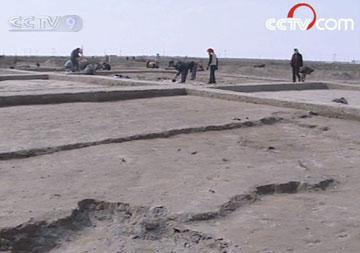
Ten kilometers from Bohai Bay, in east China's Shandong province, villagers are busy digging out a 10-thousand square metre site. (Photo: CCTV.com)
Salt is a commodity we take for granted. In ancient times salt was not available at any neighborhood corner store. It was painstakingly extract. Archaeologists are learning something of the old ways and a newly discovered site, which is believed to be used for making salt.
Ten kilometers from Bohai Bay, in east China's Shandong province, villagers are busy digging out a 10-thousand square metre site. The villagers have unearthed pottery shards, for the most part, but also laterite and a human skull. Archaeologists consider the discoveries invaluable.
Prof. Wang Qing, Archaeology Dept. of Shandong University, said, "Initial assessment of the site reveals that sea salt was extracted here during the Shang and Zhou dynasties around 1100 BC. This site is unparalleled in scale and scope.
Geographical traces indicate that the site was not the centrale locale in a town of three thousand years antiquity. The abundance of pottery shards does indicate particular activities that drew people away from their residential quarters.
Prof. Wang Qing said, "Helmet-shaped pottery has been found in pristine condition. The academic circle has long held the view that these particular jars are closely related to sea salt extraction in this area."